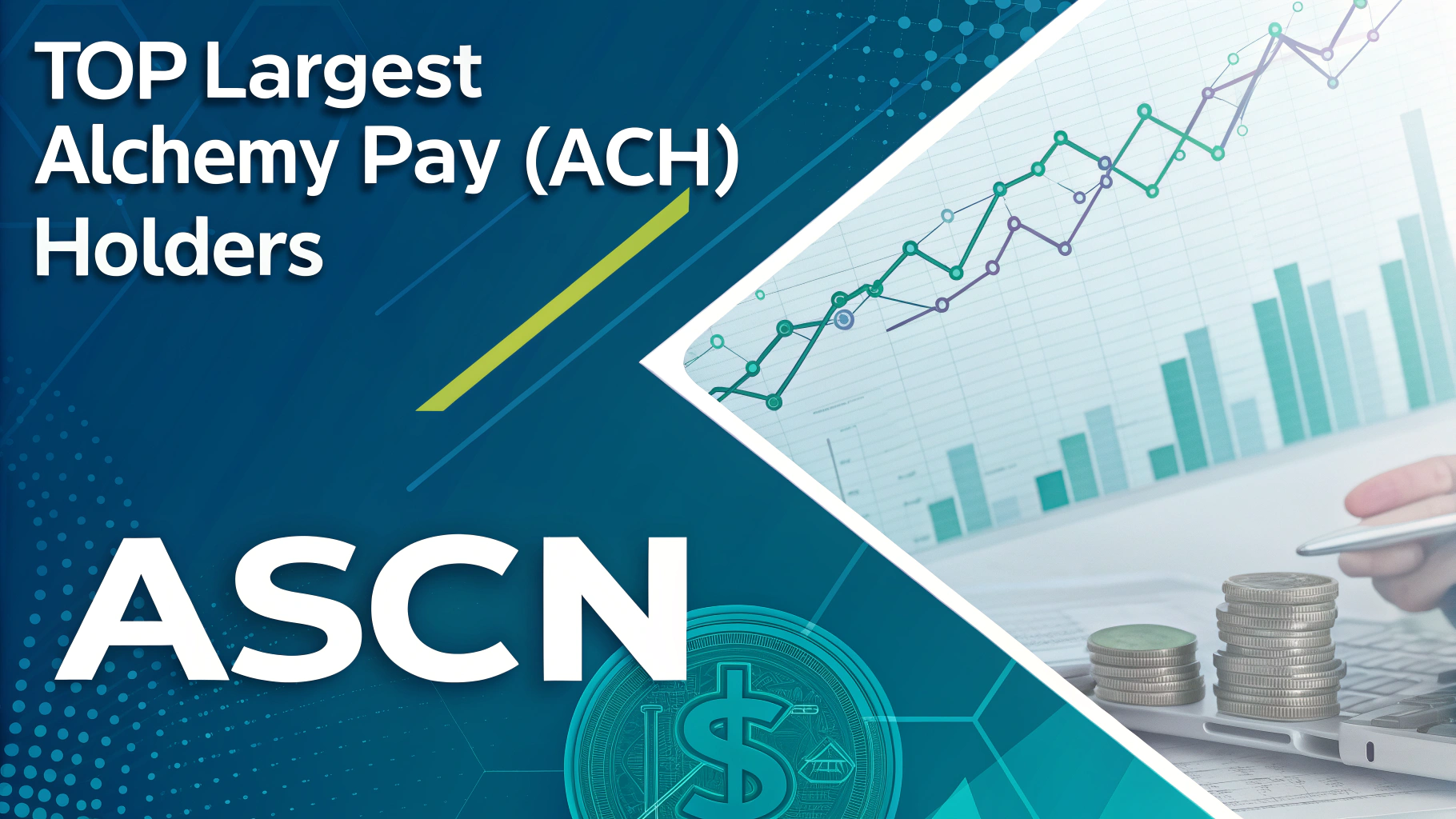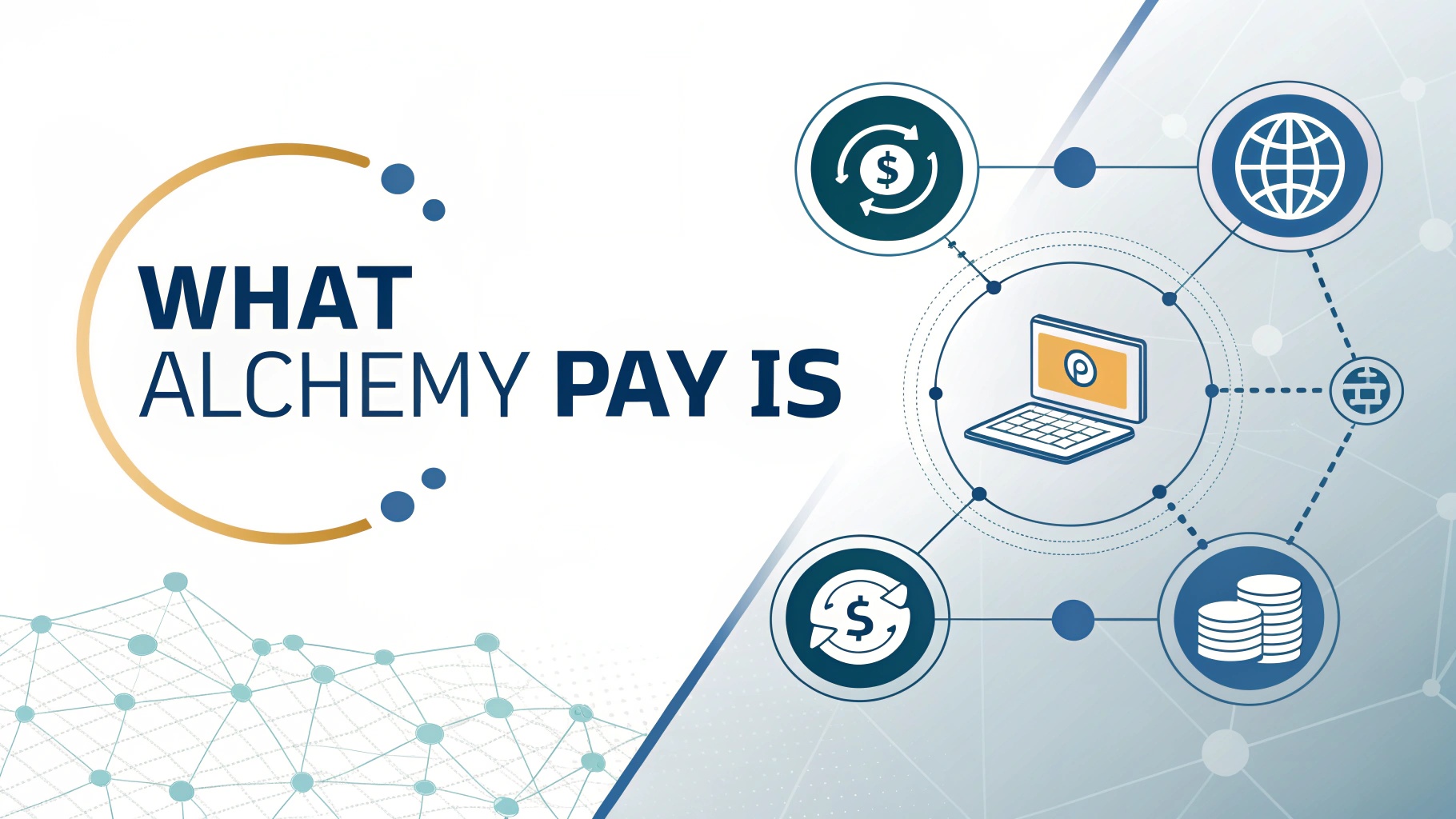TOP largest Alchemy Pay (ACH) holders — ASCN

TOP largest Alchemy Pay (ACH) holders — ASCN
In 2025, Alchemy Pay keeps building momentum, and the ACH token is turning into an increasingly important piece of the crypto puzzle.
You might be wondering: who actually holds ACH, and why should you care?
By the end of this overview, you’ll have a practical grasp of who controls large portions of Alchemy Pay, how that affects the price, and what signals to watch if you’re investing.
What Alchemy Pay Is — and Why Big Holders Matter
Alchemy Pay isn’t just another random token floating around. It’s one of the few crypto projects solving a real-world problem. The goal? Let businesses accept crypto payments as easily as swiping a card.
Year after year, the project keeps strengthening its foothold in global payments.

A Quick Look at the ACH Project
Alchemy Pay connects fiat and crypto payments across the globe.
The platform runs on its native token ACH, used for fees, rewards, and revenue sharing inside the ecosystem.
The company launched back in 2018, and by 2025 it’s active in over 170 countries, serving millions of users.
Alchemy Pay’s Role in the Crypto Payments World
The good news? Alchemy Pay keeps landing partnerships with big names like Binance, Shopify, and WalletConnect.
In 2025, they secured an MTL license in Arizona, expanding operations in the U.S. The ACH token acts as a bridge between crypto and fiat — enabling instant swaps, merchant APIs, and stablecoin support.
Put simply, Alchemy Pay has become a serious player in the payments sector.
Why It’s Worth Knowing Who Holds the Most
Here’s something most investors overlook:
The top 10 addresses hold around 41% of all ACH ever issued. The top 20? Roughly 84% combined.
That’s massive concentration. It means a handful of wallets practically control the supply.
If one of them suddenly dumps — prices can crash fast.
If they’re accumulating instead — that’s often a signal of institutional confidence and long-term growth potential.
How Big Wallets Affect Price and Liquidity
Large addresses directly shape both market liquidity and supply.
When an exchange wallet suddenly moves a big chunk of tokens, liquidity rises — but prices can dip short-term.
On the flip side, when tokens sit idle in long-term wallets, circulation drops, which can stabilize or lift the price.
For traders — whether new or seasoned — watching the behavior of these big holders gives a serious strategic edge.
Top Addresses Holding Alchemy Pay (ACH)
According to July 2025 data:
-
Top 10 wallets hold about 41.26% of the total ACH supply.
-
Top 20 wallets control roughly 84%, with the top two alone making up 27.13%.
In other words, Alchemy Pay’s supply is highly concentrated — a few addresses hold most of the power.
Let’s break them down.
Major Exchanges (Binance, Coinbase, KuCoin)
-
#1:
0xf977814e90da44bfa03b6295a0616a897441acec— about 2.23B ACH (22.27%), likely a Binance hot wallet. -
#2:
0xda77e48987879d322d4f2aff84c526ca7ee21cfe— around 486M ACH (4.86%), probably tied to KuCoin or Coinbase.
Fund and Partner Addresses
Wallets holding 2–3% of supply (like 0x0529ea5885702715e83923c59746ae8734c553b7 and 0x2220e4cf9259b593fd9df160058c2af3454245e1) could belong to investment funds or strategic partners, though they aren’t publicly tagged.
Probable “Whales” and Long-Term Holders
Some wallets with around 150M ACH (~1.5%) show identical balances — likely multiple wallets belonging to one whale investor or a multi-sig setup.
Alchemy Foundation and Related Infrastructure
Foundation-linked wallets aren’t explicitly marked, but they likely sit among the top 20 — holding between 2–4% each, with minimal activity and long-term storage patterns.
How to Check Who Owns ACH: A Quick Toolkit
Ever wondered who really holds billions of Alchemy Pay tokens? The answer’s public — you just need to know where to look.
Unlike banks, blockchains are transparent. The trick is reading the data right.
Using Etherscan and Other Blockchain Explorers
Start with Etherscan.io — ACH runs on Ethereum.
Type “Alchemy Pay” in the search bar and open the token page.
You’ll find:
-
Total supply (max and circulating)
-
Token contract
-
Top holders list
Each address shows balance, ownership share, and transaction activity.
If an address holds 22% and makes constant transfers — that’s likely an exchange.
But some addresses stay anonymous, and here’s the tricky part…
How to Tell an Exchange Wallet from a Private Investor
Not always easy — but here are a few clues:
-
Address labels: Explorers like Etherscan and Arkham often tag exchange wallets.
-
Behavior: Constant transactions = exchange. Silent for months = whale or fund.
-
Connections: Transaction analysis can reveal if a wallet interacts with centralized platforms.
If a wallet holds more than 1% of total supply and hasn’t moved in a while — it’s worth watching. Especially if you’re considering buying ACH.
Analytics Tools: Nansen, Arkham, Lookonchain
For deeper tracking, three tools stand out in 2025:
-
Nansen.ai — top-tier analytics showing wallet types (funds, traders, whales) and “smart money” movements.
-
Arkham Intelligence — automatically links wallets to companies, funds, and exchanges, perfect for real-time tracking.
-
Lookonchain — focuses on breaking news and whale alerts, often catching movements within minutes.
If you don’t want to sift through dashboards manually, ASCN.AI can pull the same insights into one simple view — showing where the smart money’s moving in seconds.
How Large Holders Influence ACH’s Price
When one wallet controls 20% of supply, it’s fair to ask: what happens if they sell?
The truth is, these large addresses can dramatically sway the market — both ways.
The Risk Side: Dumps and Manipulation
Here’s the ugly part.
When a top wallet moves millions of tokens, the market reacts instantly.
-
Token dumps: Massive transfers to exchanges often trigger panic selling.
-
Price manipulation: Whales can hype up interest, then unload their bags — classic pump-and-dump play.
For example, in August 2023, a major address sent 100M ACH to Binance, and within 48 hours, the price dropped 17%.
It’s a familiar story in crypto, and Alchemy Pay isn’t immune.
The Positive Side: Stability and Institutional Interest
But it’s not all bad news.
When big wallets stay dormant for months, it often signals long-term confidence.
In early 2024, several large addresses accumulated ACH but didn’t send it to exchanges. Around the same time, the price doubled from $0.017 to $0.036.
Later, Arkham and Nansen identified institutional wallets quietly building positions — likely anticipating Alchemy Pay’s expanding B2B integrations with Shopify, Binance Pay, and others.
Real-World Examples of Market Reactions
The market always notices big moves. A few quick cases:
-
January 2024: A 300M-ACH wallet moved 120M to an exchange → price dropped from $0.019 to $0.015 in 24h.
-
May 2025: A fund transferred 80M ACH off an exchange → price jumped 25% in three days.
-
July 2025: Nansen tracked rising ACH balances in smart wallets → trading volumes surged 48% that week.
Bottom line: whale movements aren’t just “interesting stats.” They’re real-time market signals.
Conclusion: Should You Track ACH Holders When Investing?
Can you trade just by watching charts? Sure.
But tracking top wallets adds another dimension — especially in volatile markets.

How to Analyze Ownership Structure
Start simple: go to Etherscan, Nansen, or CoinLore → open “Holders.”
If 80% of ACH sits with 20 wallets — that’s a red flag for concentration risk.
If whales are quietly accumulating and movement is low, liquidity looks healthy.
But if you see spikes in exchange deposits — a correction might be coming.
Buy, Hold, or Sell? Here’s What to Watch
-
Buy: when whales are moving tokens off exchanges and trading volumes rise.
-
Sell: if big inflows to exchanges appear or whale wallets start unloading.
-
Hold: when ownership is stable and the news cycle is calm.
This isn’t financial advice — just smart observation of what the major players are doing.
Long-Term Takeaways on ACH
Alchemy Pay continues to expand — licensing, partnerships, real-world integrations.
That’s bullish for fundamentals.
But ownership remains heavily centralized, which can be both stabilizing and risky.
So yes — tracking top holders absolutely matters.
Think like a fund, not like the crowd.
That’s how you turn ACH from “just another token” into part of a real strategy.
And if you’d rather let tech do the tracking, ASCN.AI can crunch the numbers, monitor wallet flows, and compare token behavior across the market — all in one dashboard.
Because in crypto, those who see the moves first usually win the trade.

